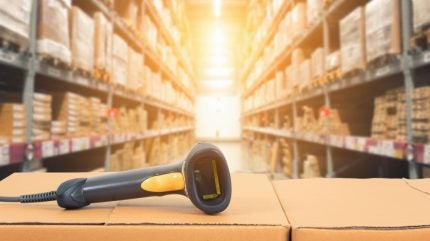
The packaging industry is a dynamic and essential sector, continuously evolving to meet the demands of consumers and businesses alike. Understanding the price trends in packaging is crucial for stakeholders, including manufacturers, retailers, and end consumers.
This article provides an in-depth look at the current and future price trends in the packaging industry, highlighting key factors influencing these trends, and offering insights into what the future may hold.
The current state of packaging prices
Packaging prices have experienced significant fluctuations in recent years, driven by various global and local factors. One of the primary drivers has been the cost of raw materials.
Materials such as paper, plastic, and aluminium are fundamental to packaging production, and their prices have been volatile due to supply chain disruptions, geopolitical tensions, and environmental regulations.
The COVID-19 pandemic exacerbated these issues, causing supply chain bottlenecks and increased demand for certain types of packaging, particularly in the e-commerce and healthcare sectors.
This surge in demand, coupled with limited supply, led to price increases across various packaging materials.

US Tariffs are shifting - will you react or anticipate?
Don’t let policy changes catch you off guard. Stay proactive with real-time data and expert analysis.
By GlobalDataFor instance, the cost of corrugated cardboard skyrocketed as online shopping boomed, while plastic prices rose due to increased demand for personal protective equipment (PPE) and single-use packaging.
Additionally, the industry has faced increased energy costs, which directly impact manufacturing expenses. The rise in fuel prices has also contributed to higher transportation costs, further inflating packaging prices.
As a result, businesses have had to navigate these cost increases while striving to maintain profitability and meet customer expectations.
Influencing factors on future pricing
Several factors will continue to influence packaging prices in the coming years. One of the most significant is the ongoing push for sustainability. As consumers and governments become more environmentally conscious, there is a growing demand for eco-friendly packaging solutions.
This shift is leading to increased investment in research and development of sustainable materials, such as biodegradable plastics and recyclable paper.
While these innovations are essential for reducing environmental impact, they often come with higher production costs, which may translate into higher prices for end consumers.
Technological advancements are also playing a crucial role in shaping the future of packaging prices. Automation and digitalisation are streamlining production processes, improving efficiency, and reducing labour costs.
However, the initial investment in these technologies can be substantial, potentially leading to short-term price increases. Over time, as these technologies become more widespread and cost-effective, they are expected to stabilise or even reduce packaging costs.
Another factor to consider is the global economic climate. Inflation rates, currency fluctuations, and trade policies can all impact the cost of raw materials and manufacturing.
For example, trade tensions between major economies can lead to tariffs and supply chain disruptions, affecting the availability and price of packaging materials.
Monitoring these economic indicators can provide valuable insights into potential price trends in the packaging industry.
Market demand and consumer behaviour
The demand for packaging is closely linked to consumer behaviour and market trends. The rise of e-commerce has been a major driver of packaging demand, particularly for durable and protective materials that ensure products reach consumers in pristine condition.
As online shopping continues to grow, so too will the need for innovative packaging solutions that cater to the unique requirements of this market.
Consumer preferences for convenience and customisation are also influencing packaging trends. The demand for personalised packaging, such as customised labels and unique designs, is on the rise. While these features can enhance brand loyalty and customer satisfaction, they may also result in higher production costs.
Sustainability is another key consideration for consumers. Environmentally conscious shoppers are increasingly seeking out products with minimal and recyclable packaging.
Brands that prioritise sustainable packaging can appeal to this growing demographic, potentially commanding higher prices for their eco-friendly products.
However, balancing sustainability with affordability remains a challenge for many businesses.
Strategies for managing packaging costs
In response to the fluctuating packaging prices, businesses are adopting various strategies to manage costs and maintain competitiveness. One approach is to invest in more efficient production methods.
By embracing automation and advanced manufacturing technologies, companies can reduce waste, improve productivity, and lower labour costs. These efficiencies can help offset the rising costs of raw materials and energy.
Another strategy is to diversify suppliers. Relying on a single supplier for packaging materials can be risky, especially in times of market volatility.
By establishing relationships with multiple suppliers, businesses can mitigate the impact of supply chain disruptions and negotiate better pricing terms.
Sustainable practices are also becoming a focal point for cost management. Implementing recycling programmes, reducing material usage, and exploring alternative, eco-friendly materials can not only appeal to environmentally conscious consumers but also reduce long-term costs.
While the initial investment in sustainable practices may be higher, the potential savings and brand reputation benefits can outweigh these costs over time.
Shaping the future of packaging prices
The packaging industry is at a crossroads, facing both challenges and opportunities as it navigates the complex landscape of price trends.
The push for sustainability, technological advancements, and evolving consumer preferences are all shaping the future of packaging prices.
By understanding these factors and adopting proactive strategies, businesses can better manage costs and stay ahead in this ever-changing industry.
As we move forward, keeping a close eye on market developments and remaining adaptable will be key to success in the packaging sector.



